
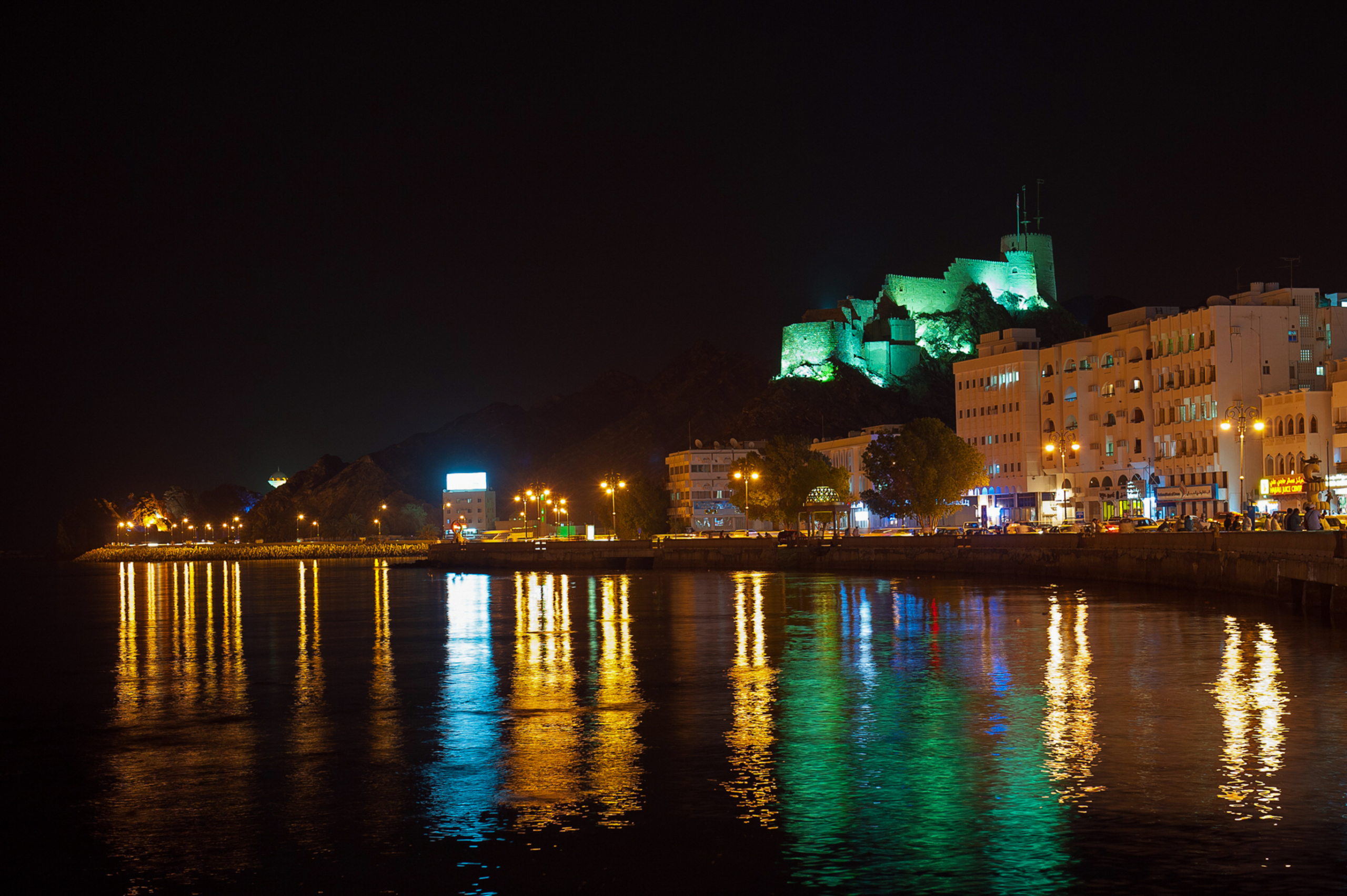
Exploring Mutrah Fort Muscat: A Journey Through Oman’s Rich History
Mutrah Fort Muscat towers over the bustling harbor with its imposing stone walls and strategic position. The centuries-old fortress caught my eye instantly, as its weathered ramparts tell stories of battles, trade, and maritime glory.
Our visit showed that Mutrah Fort is much more than a military stronghold. This architectural marvel blends Portuguese defensive ingenuity with traditional Omani elements. The structure stands as proof of the region’s rich history. The ancient cannon collections and panoramic harbor views give visitors an incredible trip through time.
Let me share everything you should know about this historic landmark. You’ll learn about its military history, architectural features, best photography spots, and practical visiting tips.
The Strategic History of Mutrah Fort
My fingers traced the ancient walls of Mutrah Fort while I marveled at its rich historical legacy. This magnificent fortress, built in 1507, has seen centuries of strategic military importance and cultural change.
Origins and Portuguese influence
The fort’s foundations date back to the early 16th century. The Portuguese turned it into a formidable military installation. Major General Roy Freire led the reinforcement efforts in the 1560s. They added stronger walls and more towers that made it one of their strongest regional strongholds.
Military significance through centuries
The fort proved its military worth at several key moments in history:
- The defenders repelled the Ottoman invasions in the late 1500s
- The fort was a vital part of the siege of 1650
- It became the turning point in driving Portuguese forces from Oman
- The structure remained a military installation through WWII
The sort of thing I love was the clever network of eight watchtowers around the main fort. The builders positioned each tower strategically. If enemies took any tower, the main fort could neutralize it quickly – proof of remarkable military planning from that era.
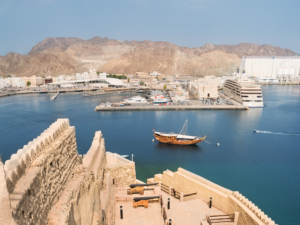
Role in protecting Muscat’s harbor
The fortress’s position on the rocky outcrop of Al Hajar mountains gave me a deep appreciation of its strategic brilliance. This location offered exceptional advantages in defending Mutrah’s natural harbor. The fort’s design blended Portuguese military expertise with local architectural elements. The builders used traditional Omani materials like sandstone blocks and sarooj (traditional Omani plaster).
A secret passage near the western entrance block caught my attention – a clever military feature that showed the fort’s defensive strength. The fortress protected the valuable harbor and served as a vital observation post. Defenders could spot threats long before they reached Muscat’s shores.
The centuries saw Mutrah Fort change from a Portuguese stronghold into a proud symbol of Omani heritage. The fort helped shape the region’s maritime history. Its transformation reflects Oman’s path from colonial influence to independent strength.
Architectural Marvels of the Fort
The massive wooden portal of Mutrah Fort opens to reveal a remarkable blend of military precision and architectural beauty. Each stone and angle serves a purpose, showing centuries of defensive breakthroughs.
Portuguese defensive design elements
Portuguese military architects adapted their European fortress design brilliantly to this rocky outcrop. Their ingenuity shines through the fort’s irregular walls that vary in thickness and height, perfectly suited to the challenging terrain. The traditional sarooj plaster covers local sandstone blocks, which have endured centuries of coastal weather impressively.
Watchtowers and battlements
The fort’s three circular towers dominate the structure:
- The eastern tower, commanding the northeastern sector
- The western tower, protecting the harbor approach
- The southeastern tower, completing the defensive triangle
The winding stairs lead to battlements where distinctive semi-circular military balconies stretch upward in a unique Omani style. These balconies represent traditional Omani military architecture’s signature elements that provide protection and visibility to defenders.
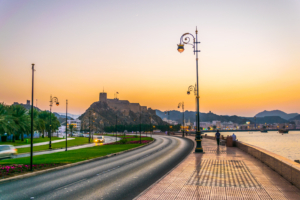
Integration with natural landscape
Mutrah Fort’s remarkable harmony with the natural terrain makes it unique. The architects skillfully built around the irregular rocky mass to create an asymmetrical yet balanced structure. The fort’s levels rise naturally from west to east along the hill’s contours, while irregular northern and southern walls extend to create optimal defensive positions.
A secret passage near the western entrance block showcases the designers’ brilliance in combining tactical needs with natural rock formations. The cannon slots crowned with semi-circular balconies demonstrate how each architectural element works with the landscape. The result is an impregnable fortress that seems to emerge organically from the rocky hillside.
Military Arsenal and Fortifications
My visit to Mutrah Fort’s military arsenal takes me back through centuries of warfare and defense. The fort’s impressive weaponry collection tells a compelling story of Oman’s military rise and strategic value.
Historic cannon collections
Nine historic cannons stand strategically throughout the fort, each with its unique story. The English demi culverin from 1720 stands out as the most remarkable piece. These 12-pounder cannons were engineering marvels of their time and protected the harbor with exceptional accuracy. Each cannon sits perfectly between the fort’s walls, ready to counter approaching threats.
The fort’s artillery collection has:
- 18th-century harbor defense cannons
- Portuguese-era bronze pieces
- Traditional Omani maritime guns
- English demi culverins (12-pounders)
WWII-era artillery displays
The three-pounder Hotchkiss breech-loading gun in the top yard catches my eye immediately. This WWII-era masterpiece adds a modern chapter to the fort’s military history. The fort received advanced artillery guns during World War II with an impressive 5,000-meter range – proof of its military importance well into the 20th century.
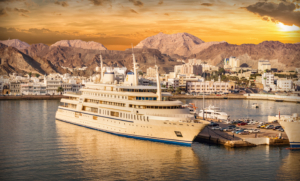
Defense mechanisms and strategies
The fort’s defensive layout showcases brilliant military planning. Carefully positioned cannons sit in three circular towers, creating overlapping fields of fire that shield the harbor from every angle. The largest tower, the fort’s defensive centerpiece, houses one of the oldest and most impressive cannons.
Artillery placement went beyond raw firepower. The fort’s builders created an impenetrable defense system. The cannons work seamlessly with the natural terrain to counter both sea and land threats. Multiple firing positions let defenders adapt their response based on attack type and direction.
Panoramic Views and Photography Spots
The rocky ridge of Mutrah Fort has one of Oman’s most breathtaking spots. This unique vantage point is a dream for photographers and anyone who loves history.
Harbor and corniche vistas
The main tower platform gives me a stunning view of Mutrah’s natural harbor. A curved ribbon of corniche runs below while traditional dhows float peacefully in the Gulf of Oman’s blue waters. The sort of thing I love is how the latticed buildings and mosques create beautiful patterns along the waterfront. Their shadows seem to dance as the sun crosses the sky.
The fort has several amazing spots to take photos:
- Main Tower Platform – Perfect for harbor panoramas
- Eastern Defensive Wall – Great for traditional dhow shots
- Western Ramparts – Best for corniche views with mountains behind
- Northern Viewpoint – Perfect for architectural details
Mountain and city points of view
The northern tower shows me a completely different scene. The dramatic Al Hajar mountains stand behind the old town, while Mutrah district’s traditional buildings spread out below. The giant ornamental incense burner in Al Riyam Park catches my eye as it stands in modern contrast to the ancient city views.
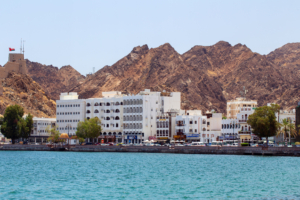
Best times for photography
My visits have taught me that timing matters most when taking photos at Mutrah Fort. The strong Arabian sun changes the mood of these ancient stones throughout the day. Here’s my guide to getting the best shots:
| Time | Lighting Conditions | Best For |
| 6:00-7:30 AM | Soft morning light | Architectural details |
| 5:00-6:30 PM | Golden hour | Dramatic shadows |
| 6:30-7:00 PM | Blue hour | Cityscape shots |
Sunset hours are magical here. The fading light covers the fort’s ancient stones in a warm, honey-colored glow. The corniche lights start to twinkle below, and the mountains cast long shadows across the harbor. I love to set up at the western ramparts during these golden moments because the light and shadow create stunning compositions.
The harsh midday sun from 10 AM to 3 PM creates unflattering shadows and overexposed images. This time works better to explore the fort’s interior courtyards, where sunlight streams through old archways to create interesting photo opportunities.
Practical Visitor’s Guide
I’ve spent countless hours learning about this historic fortress and want to share everything you need to know to make your visit to Mutrah Fort amazing. These insider tips will help you plan the perfect trip.
Entrance and timing
My recent visits show that Mutrah Fort welcomes visitors daily from 8:00 AM to 11:00 PM, which makes it one of the most available attractions in Muscat.
You’ll need your ID to get resident rates. They take both cash and cards, but I always carry some cash just in case.
Accessibility and facilities
The fort’s facilities are surprisingly modern despite its age. There’s a nice café where I stop for refreshments, especially on hot days. You’ll find clean restrooms throughout, which makes longer visits comfortable.
Parking needs some planning ahead. The designated area right outside the entrance fills up fast, especially in the evening. I usually park at the waterfront’s metered spots when the main lot is full.
It’s worth mentioning that the fort has quite steep stairs, which can be tough even for regular visitors. You might want to think about this if you’re bringing elderly family members or have mobility issues.
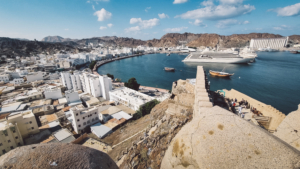
Tips for the best experience
Here are my top tips to help you make the most of your visit:
- Timing is everything: Visit from November to March when temperatures stay around a comfortable 20-25°C
- Early arrival: Get there 15-20 minutes early to find parking
- Essential items:
-
- Comfortable walking shoes for the steep pathways
-
- Water bottle, especially during warmer months
-
- ID for resident pricing
-
- Camera to capture the views
The fort’s atmosphere changes completely with the seasons. Summer visits work best early morning or late evening to beat the heat. Winter gives you perfect midday lighting for photos with pleasant temperatures.
The sort of thing I love about the fort’s extended hours is how flexible they are. You can catch the morning light if you’re an early bird or see the fort under starlight if that’s more your style.
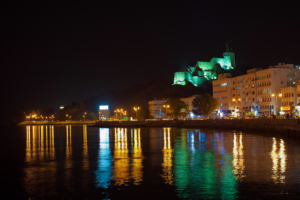
Conclusion
Mutrah Fort showcases Oman’s rich military heritage and architectural excellence. This historic fortress revealed so many amazing details during my exploration. Its Portuguese-influenced defensive design, impressive artillery collection, and the breathtaking views of Muscat’s harbor left me speechless.
The fort’s strategic location makes it a perfect spot for history enthusiasts and photographers. Its well-preserved military features and stunning vantage points add to its charm. I noticed how modern facilities blend seamlessly with the fort’s historical character.
Everyone can visit this cultural landmark thanks to reasonable entry fees and flexible hours. Each visit to Mutrah Fort reveals new aspects of Oman’s intriguing past. The sweeping views of Muscat’s coastline provide endless opportunities for perfect photos.
History buffs, photography enthusiasts, and anyone interested in Oman’s cultural heritage will find Mutrah Fort fascinating. This magnificent fortress offers a remarkable glimpse into centuries of maritime history. Just remember to bring your camera, wear comfortable shoes, and you’re all set for an amazing experience. Because the finest memories deserve the finest destinations. Your next chapter begins here Book Now!
